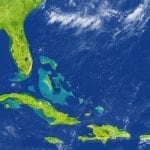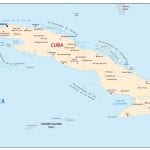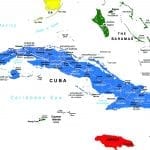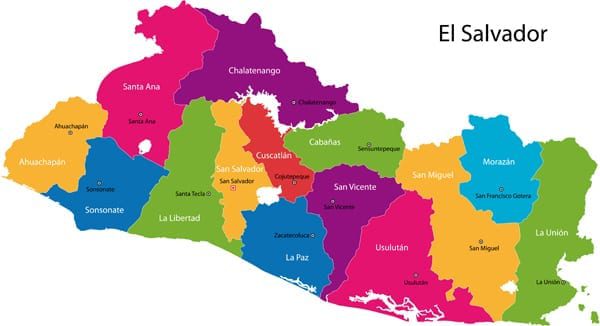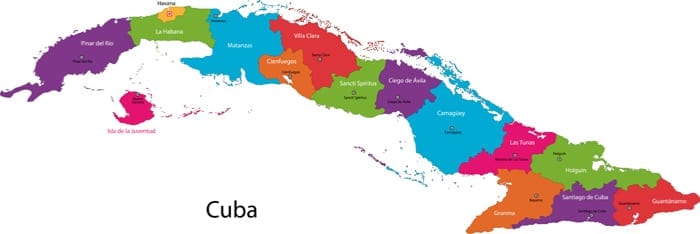
Map of Cuba | Cuba Flag Facts | Should I visit Cuba?
Escape the weariness, pack up your baggage, and visit Cuba, a colourful island country with pristine beaches, turquoise waters, exciting culture, and rich history. It is the largest island of the Caribbean Sea and has been among the top-notch tour places of North America. Though there have been some political upsets, yet natural beauty is the same. The music, the food, the resorts, there are so many reasons to visit Cuba. In this article, we are going to explore some captivating aspects of this island nation. Be with us and enjoy the treat!
Map of Cuba
Where is Cuba located and what countries surround it?
First thing first, where is Cuba located? Unroll your world map and spot the northern hemisphere. The country of Cuba is in the Greater Antilles part of the Caribbean situated at the meeting point of Atlantic and Caribbean waters along with Mexican Gulf. A detailed map of Cuba has been attached above. Jamaica sits on its southern line, Bahamas and Florida to the north, the Turks and Caicos Islands to the Eastern side, and Mexico towards the west, its ideal position renders high stakes and interests for various nations. Cuba map comprises mainly archipelagos that cover more than 4000 sites including Cuba’s mainland, a separate island of Isla de la Juventud, and various other small islets.
Cuba Population
According to Worldometer elaboration of the latest United Nations data, at present, Cuba’s population comprises 11,325,767 people. That equals about 0.15% of the total population around the globe. With such an exceeding number of people, about three fourth (78.3 %) of its inhabitants reside in urban areas. The population density is also high, i.e., 106 people per kilometre square. The median age is 42.2 years.
Cuba population by race
Cuba consists of mainly three ethnicities; the whites, the mulattoes (descendants of European and African mixed ancestry), and the blacks. The whites are both European and Spanish, but the majority belong to Spanish lineage. They make up around 64.1% of the total Cuban population. They have been politically stronger than other groups controlling the socio-economic order of the land. Second to them are mestizos comprising 26.6% of the country’s ethnic composition. Rest of this race soup is made by the blacks, i.e., 9.3%.
Christianity is the major one among Cuba religions, with around 59% of all its population. A large proportion (23%) has atheistic notions, and 12% follow Santeria. Rest of the populace have other beliefs.
Cuba Language other than Spanish
Cuba has been a Spanish colony, and hence the impacts of colonial rule are still visible. The topmost influence is in terms of language. Spanish is the official as well as the majorly spoken language here. However, Cuban Spanish is slightly different from the standard Spanish. Such minute differences also exist in other Latin American countries. The experts refer to these differences towards immigration of various races from different regions over time. The African lineage has a chief role in expanding its lingual boundaries. Despite being the first language of more than 90% of its population, the government has not nationalized Cuban Spanish.
Haitian Creole is another noticeable language in Cuba. It was initially specified to Haitian immigrants who came here in the last two centuries; at present, non-Haitian communities also speak it. Though highly discriminated against till mid of the past century, Haitian Creole is becoming popular in the media and radio industry.
Lucumi is limited only to Santeria religious practices. It was created by African slaves known as Yoruba. Lucumi is itself a derived Yoruba language. Other regional languages include Galician and Corsican.
Cuba Flag Colour

With a width to length proportion of 1:2, Cuban flag has five horizontal bands in a colour sequence of blue, white, blue, white, and blue. These stripes have equal width. There is a red triangle at the left border pointed towards the centre of the flag. The triangle contains a white star having five points.
Cuba facts- History of Cuba flag
Not only the pattern but its history is equally intriguing. The national flag of Cuba is one and half-century old and dates to the freedom fight against Spanish rule. Around the 1850s, a Venezuelan general named Narciso López stood against the colonial government. Since he wanted a liberated Cuba, so the fleet was to be gathered under a shared flag. A poet named Miguel Teurbe Tolón came up with this design. López waved this flag in subsequent encounters though none of his strikes was successful. In the late nineteenth century, America-Spain war broke out. As a result, America captured Cuba from Spain and from 1899 to 1902, the American flag flew over its boundaries. The national flag was officially hoisted for the first time in 1902 when the country got independence.
Cuba Flag Meaning
The colour and pattern of a flag are the backbones of a nation’s pride. They are not a mere showoff rather have deep meanings encoded in them. Like other remarkable flags, Cuba’s national flag also has a symbolic value. The three blue stripes refer to the primary three land divisions that held the military regime at the time of its creation. Though the country has a vast area, these bands are a symbolic expression of Cuban original three districts. The white stripes represent the scrutiny, purification, and the strength of patriotic ideals. The red triangle has multiple elaborations. Some call it to be a metaphor of the bloodshed that occurred to independence, whereas others take it for equality and fraternity. The white star is a depiction of the country’s freedom.
Similarities between the Cuban flag and Puerto Rican flag

To your surprise, both flags have the same design and hue. The only difference is in the alignment of colours. The blue stripes and red triangle in the Cuban flag are substituted by red bands and blue triangles in Puerto Rican flag. Based on the Cuba flag, the Puerto Rican flag was designed in the mid-1890s by a committee of exiles living in New York. Narciso López was also in New York in 1848 when he adopted the freedom flag. One can guess from such resemblance that there must be a collaboration among freedom fighters of both the lands.
Should I visit Cuba?
Travelling to Cuba is a profound fun experience for adventure-loving tourists. Despite the expense, trips to Cuba have not been less. Cuban economy relies mainly on tourism. Even though political circumstances have made it difficult, still Cuba vacations are among the top priorities for travelers who want to visit the Caribbean islands. What makes it different is its antiquity. The island has not been polluted with modern air yet. Stepping on Cuban classy streets is like a time-lapse. You enter another dimension where you see cars from the 50s, French-influenced architecture, colourful houses, street guitarists, salsa moves, untouched forestation, smiling people and an involving culture. It is the place to get rid of each kind of stress. The best things about Cuba are its UNESCO marked world heritage attractions. Wherever you go there, do not forget to take a snap on these astonishing spots.
Best places to visit in Cuba
- Old Havana or Habana Vieja has so much from history. It is like a living museum that has preserved the 200 years of art and culture. It is among the Cuban world heritage sites and offers an enchanting splurge from the past. Top visiting spots here include Plaza de la Catedral, Catedral de San Cristobal, Bodeguita del Medio, Castillo de la Real Fuerza, Plaza Vieja, and Casa del Conde Jaruco.
- Cuba Varadero, a home to Cuban white sand beaches and crystal blue waters! If you want to enjoy snorkelling, scuba diving, or beach fun, visit Varadero. Apart from the best beaches and relaxing resorts, the city also has natural preserves, caves, and flower parks as Parque Natural Punta Hicacos, Cueva de Musulmanes, and Parque Josone.
- Trinidad is another UNESCO site. The city is beaming with historic buildings and the colonial architectural outlooks. Here you will find a refreshing touch of classic beauty entangled in a time trap. A look on cobblestone streets feels like the past centuries have been frozen over. The top attractions in this city include Plaza Mayor, Church of the Holy Trinity, Church and Monastery of Saint Francis, Museum of Colonial Architecture, etc.
- Parque Nacional Viñales, a natural green valley with agricultural as well as hiking lands is a lovely place located in Sierra de Los Organos. It is also among UNESCO marked attractions. The valley offers scenic views, horse riding, and a close to nature experience.
Best time to visit Cuba
Cuba travel is equally perfect all days, July comes with a special treat, that is, Santiago de Cuba Carnival. It is the liveliest time to enjoy the celebrations and festivals.
BOOK HOTEL IN ANY PART OF CUBA AT GREAT PRICES

